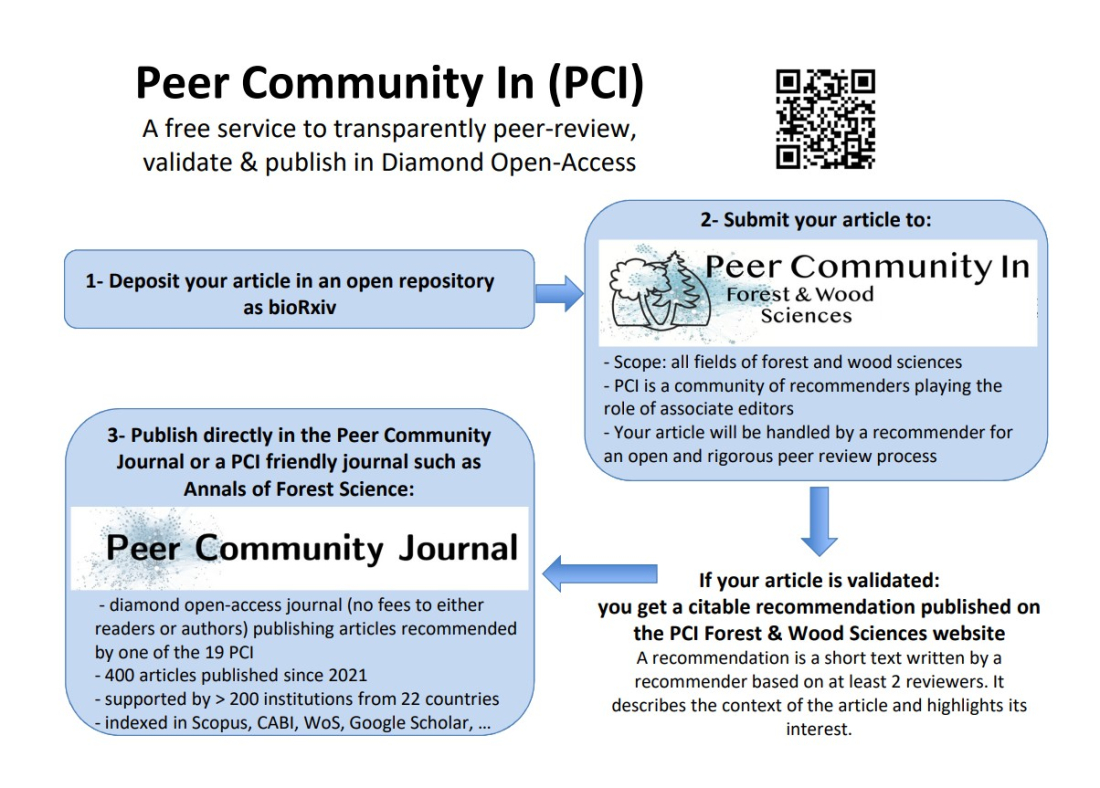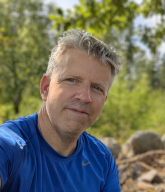Prof. Milan Lstibůrek graduated from the Swedish University of Agricultural Sciences, SLU, the Czech University of Life Sciences, CZU (undergraduate degrees in forest biology and forestry), and North Carolina State University, NCSU (Ph.D. in quantitative forest genetics). Following his postdoc experience at the University of British Columbia, UBC, he pursued his academic career at the CZU, eventually reaching a full professorship in 2015.
His original research covers the following topics: development of breeding and conservation strategies in forest trees ("Breeding without Breeding", "Rolling-Front Landscape Breeding", "Pollen-based Assisted Migration"); seed orchard spatial layouts ("Minimum Inbreeding Seed Orchard Design", "Optimum Neighborhood Seed Orchard Design"); development of deployment and selection algorithms; development of alternative approaches to estimating genetic parameters (concept “Realized Heritability in Panmictic Populations”); and integration of genomics in forest tree breeding.
Scientific publications: Google Scholar
I believe that scientific publishing should not be a financially driven business. I serve as an associate editor of the Canadian Journal of Forest Research, published by an independent, non-for-profit organization Canadian Science Publishing. Additionally, I am a member of the managing board of PCI Forest & Wood Sciences, which promotes an innovative publishing model. Both journals are aligned with my views on scientific ethics and fair publication practices.

Teaching
The week-long course Introduction to Quantitative Genetics was held in 2023 and 2025 and is expected to be offered again in 2027. It is open to Ph.D. students, advanced undergraduate students, and professionals working in all disciplines of genetics. Optional support may be available through EvolTree.
I also teach a Ph.D.-level course titled Ethics in Science.
In addition, I teach a semester-long undergraduate course, Forest Genetics, for forestry majors.
Research
(1) Practical Forest Tree Breeding Strategies for Shifting Environmental Conditions
Tree breeding is challenging both financially and logistically. Most tree breeding programs involve repeated cycles of three activities: breeding (crosses), testing, and selection. Historically, breeders conducted controlled crosses, followed by the establishment of large progeny trials replicated across a relatively small number of test sites. One drawback of these methods is that breeders must isolate and label each strobilus and conduct crosses with known pollen, which must be collected from individual trees. The mating scheme is optimized to facilitate the estimation of genetic parameters and provide information for selecting the top-ranking individuals.
Our "Breeding-without-breeding", BWB, concept is based on natural pollination, meaning breeders typically collect cones in seed orchards and establish progeny trials without knowing the parentage of individual seedlings. Later, they used DNA analyses to reconstruct the pedigree. The estimation of genetic parameters and selection then follows the same trajectory.
Collecting bulk seed from orchards allows the establishment of commercial forest stands that can be regarded as "progeny trials". Many such trials facilitate much bigger candidate populations for selection (higher selection intensity) and evaluation of multiple adaptive traits across vast and complex environmental gradients. With climate change, this is a prerequisite for efficient multi-trait selection.
The fundamentals are introduced here, followed by a retrospective (small-scale) study:
El-Kassaby, Y. A., & Lstibůrek, M. (2009). Breeding without breeding. Genetics Research 91(2): 111-120.
One of the questions I received was about pollen contamination and its effect on BWB efficiency. Using the phenotypic preselection, it is not difficult to show that the male parents of high-ranking offspring are typically located in seed orchards, and the effect is substantial. Theoretical reasoning is here:
Lstibůrek, M., Klápště, J., Kobliha, J., & El-Kassaby, Y. A. (2012). Breeding without Breeding. Tree Genetics & Genomes 8(4): 873-877.
The reasoning was later empirically demonstrated here:
Korecký, J., Lstibůrek, M., & El-Kassaby, Y. A. (2014). Congruence between theory and practice: reduced contamination rate following phenotypic preselection within the Breeding without Breeding framework. Scandinavian Journal of Forest Research 29(6): 552-554.
Another question was how many individuals should be genotyped to satisfy the declared selection diversity constraint. This is somewhat more complicated, but I recommend reading both the Introduction and Discussion chapters:
Lstibůrek, M., Ivanková, K., Kadlec, J., Kobliha, J., Klápště, J., & El-Kassaby, Y. A. (2011). Breeding without breeding: minimum fingerprinting effort for the effective population size. Tree Genetics & Genomes, 7(5), 1069-1078.
For a thorough quantitative-genetic treatment of the BWB concept and its efficiency, see
Lstibůrek, M., Hodge, G. R., & Lachout, P. (2015). Uncovering genetic information from commercial forest plantations—making up for lost time using "breeding without breeding". Tree Genetics & Genomes 11(3): 1-12.
In the paper, we provide stochastic and deterministic gain predictions. We provide reasoning to quantify the proportion of offspring that should be phenotyped and genotyped. It is essential to understand that in BWB, DNA sampling is conducted in a small proportion of the offspring, thus minimizing the genotyping cost.
The BWB concept is gaining popularity in many countries. We discuss the large-scale application in Norway's spruce breeding program in Norway. This is where we first introduce the "landscape" adjective to the BWB.
Lstibůrek, M., El-Kassaby, Y. A., Skrøppa, T., Hodge, G. R., Sønstebø, J. H., & Steffenrem, A. (2017). Dynamic gene-resource landscape management of Norway spruce: combining utilization and conservation. Frontiers in Plant Science 8: 1810.
The following paper provides the first large-scale empirical evidence of the BWB's efficiency. I am pleased to say that BWB works, and the efficiency is comparable to traditional breeding at a fraction of the cost. Selected offspring were already grafted and planted in the second-generation seed orchard (using the Minimum-Inbreeding design) and will provide improved seed to Austrian forestry.
Lstibůrek, M., Schueler, S., El-Kassaby, Y. A., Hodge, G. R., Stejskal, J., Korecký, J., ... & Geburek, T. (2020). In situ genetic evaluation of European larch across climatic regions using marker-based pedigree reconstruction. Frontiers in Genetics: 28.
In January 2023, I presented a talk at the Umea Plant Science Center, focusing on developing BWB methods. During my return to Prague, it struck me that existing methodologies, which rely on simultaneous progeny trials or forest stands under BWB, could be significantly improved. I conceived an approach for continuous evaluation, exposing selection candidates to a dynamic range of spatial and temporal environmental conditions. This led me to the idea of designing a specialized seed orchard—or what we refer to as a breeding arboretum. I proposed a straightforward optimization method to routinely assess and, if necessary, replace clones within the orchard. This shifts the paradigm from distinct breeding cycles to a model of continuous evaluation. This strategy enhances adaptability to fluctuating environmental conditions and offers economic advantages. I have termed this innovative approach 'Rolling Front Landscape Breeding'.
Lstibůrek, M., García‐Gil, M.R. & Steffenrem (2023). A. Rolling front landscape breeding. Annals of Forest Science 80: 36.
(2) Heritability
I will now return to one of the above papers.
Lstibůrek, M., Klápště, J., Kobliha, J., & El-Kassaby, Y. A. (2012). Breeding without Breeding. Effect of pollen contamination on the fingerprinting effort. Tree Genetics & Genomes 8(4): 873-877.
By applying similar reasoning, heritability could be considered as an output variable. This insight prompted a research focus on deriving an analytical solution. As a result, narrow-sense heritability can alternatively be expressed as:
"Under the assumptions of Hardy-Weinberg equilibrium, the narrow-sense heritability of a quantitative trait in a given population is directly related to the likelihood of a phenotypic subset of parents passing their respective alleles onto the corresponding phenotypic subset of offspring" (Lstibůrek et al. 2018).
I used the original F. Galton's dataset of human height to demonstrate the concept. This was my first big trip outside the forest genetics. If you're interested, please take a look at the paper.
Lstibůrek, M., Bittner, V., Hodge, G. R., Picek, J., & Mackay, T. F. (2018). Estimating realized heritability in panmictic populations. Genetics 208(1): 89-95.
(3) Assisted migration
Our research group participated in the Interreg SUSTREE project, which led to a comprehensive publication on the use of assisted migration in Europe as a strategy to address climate change:
Chakraborty, D., et al. (2024). Assisted tree migration can preserve the European forest carbon sink under climate change. Nature Climate Change, 14(8), 845-852.
This research inspired the idea: why not use pollen for transfer instead of seeds or seedlings? We explored this concept further with my Ph.D. student, David Chludil:
Chludil, D., Čepl, J., Steffenrem, A., Stejskal, J., Sagariya, C., Pook, T., ... & Lstibůrek, M. (2025). A Pollen‐Based Assisted Migration for Rapid Forest Adaptation. Global Change Biology, 31(1), e70014.
The approach was subsequently questioned by:
O'Neill, G. A., Howe, G. T., Aitken, S. (2025). Pollen Assisted Migration Faces Its Challenges. Global Change Biology, 31(6), e70265.
We responded with a follow-up publication:
Chludil, D., Almqvist, C., Berlin, M., Steffenrem, A., McKeand, S. E., Korecký, J., ... & Lstibůrek, M. (2025). Alleviating the Concerns About Pollen-Based Assisted Migration. Global Change Biology, 31(6), e70262.
(4) Seed orchards
I provide a separate link on the left (Software tab) with the presentation on seed orchard spatial layouts, and my software developed for tree breeders. These tools have been used in numerous countries (Europe, North America, Africa, Asia, Australia). Upon request, I organize free seminars.
A long story short, we developed two algorithms: Minimum-inbreeding and Optimum-Allocation-Algorithm, each with its pros and cons. Please take a look at my presentation for details. I think you should read the papers in the following sequence.
Lawler, E. L. (1963). The quadratic assignment problem. Management Science 9(4): 586-599.
Lstibůrek, M., & El-Kassaby, Y. A. (2010). Minimum-inbreeding seed orchard design. Forest Science 56(6): 603-608.
Lstibůrek, M., Stejskal, J., Misevicius, A., Korecký, J., & El-Kassaby, Y. A. (2015). Expansion of the minimum-inbreeding seed orchard design to operational scale. Tree Genetics & Genomes 11(1): 1-8.
Chaloupková, K., Stejskal, J., El-Kassaby, Y. A., & Lstibůrek, M. (2016). Optimum neighborhood seed orchard design. Tree Genetics & Genomes 12(6): 1-7.
Chaloupková, K., Stejskal, J., El-Kassaby, Y. A., Frampton, J., & Lstibůrek, M. (2019). Current advances in seed orchard layouts: two case studies in conifers. Forests 10(2): 93.
In 2023, we developed a mathematical model to determine which trees should be ruled out from the grid to promote random mating in seed orchards under genetic thinning.
Chaloupková, K., Lstibůrek, M. (2022). Spatial optimization of genetic thinning in seed orchards. Annals of Forest Science 79(37): 1-8.
(5) Assortative mating
Please, check my dissertation at NC State
http://www.lib.ncsu.edu/resolver/1840.16/3821
Four papers from the research, three related to the effects of assortative mating in forest tree breeding.
Lstibůrek, M., Mullin, T. J., Mackay, T. F. C., Huber, D., & Li, B. (2005). Positive assortative mating with family size as a function of predicted parental breeding values. Genetics 171(3): 1311-1320.
Lstibůrek, M., Mullin, T. J., Lindgren, D., & Rosvall, O. (2004). Open-nucleus breeding strategies compared with population-wide positive assortative mating. I. Equal distribution of testing effort. Theoretical and Applied Genetics 109(6): 1196-1203.
Lstibůrek, M., Mullin, T. J., Lindgren, D., & Rosvall, O. (2004). Open-nucleus breeding strategies compared with population-wide positive assortative mating. II. Unequal distribution of testing effort. Theoretical and Applied Genetics 109(6): 1169–1177.
(6) Statistical inference related to the pedigree reconstruction
This collaboration is ongoing with the Faculty of Mathematics & Physics, Charles University in Prague. We aim at two new methods, one with a broader scope for the genetic community (both plants and animals) and another more focused on forestry.
(7) Optimum selection algorithms
Initial thoughts were provided here:
Funda, T., Lstibůrek, M., Lachout, P., Klápště, J., & El-Kassaby, Y. A. (2009). Optimization of combined genetic gain and diversity for collecting and deploying seed orchard crops. Tree Genetics & Genomes, 5(4), 583-593.
We are developing practical tools to assist forest tree breeders in making informed decisions for optimizing selection and deployment strategies.







